I remember my first history classes, where the Crusades were presented as a simple clash of civilizations, a series of battles over a distant, holy land. It felt abstract, a list of dates and kings to memorize. It wasn't until I stumbled upon the story of one man that the entire era clicked into focus. This wasn't just about armies; it was about leadership, strategy, and a figure so compelling that even his enemies respected him. Diving into the Saladin Crusades history isn't just about learning facts; it’s about discovering the rise of a legendary Muslim leader who reshaped the Middle East and became a timeless symbol of chivalry and unity. His story provides a crucial, humanizing perspective on one of history's most complex and misunderstood periods.
Contents
- 1 The World Before Saladin: A Fragmented Stage for the Crusades History
- 2 Saladin's Early Life and Ascent: Forging a Leader in the Fires of Zengid Ambition
- 3 The Unification of Muslim Lands: A Crucial Chapter in Saladin Crusades History
- 4 The Battle of Hattin and the Recapture of Jerusalem: The Zenith of Saladin Crusades History
- 5 The Third Crusade and the Clash of Titans: A Deeper Look into Saladin Crusades History
- 6 The Legacy of Saladin: Beyond the Crusades History
- 7 Frequently Asked Questions about Saladin Crusades History
- 8 References
The World Before Saladin: A Fragmented Stage for the Crusades History
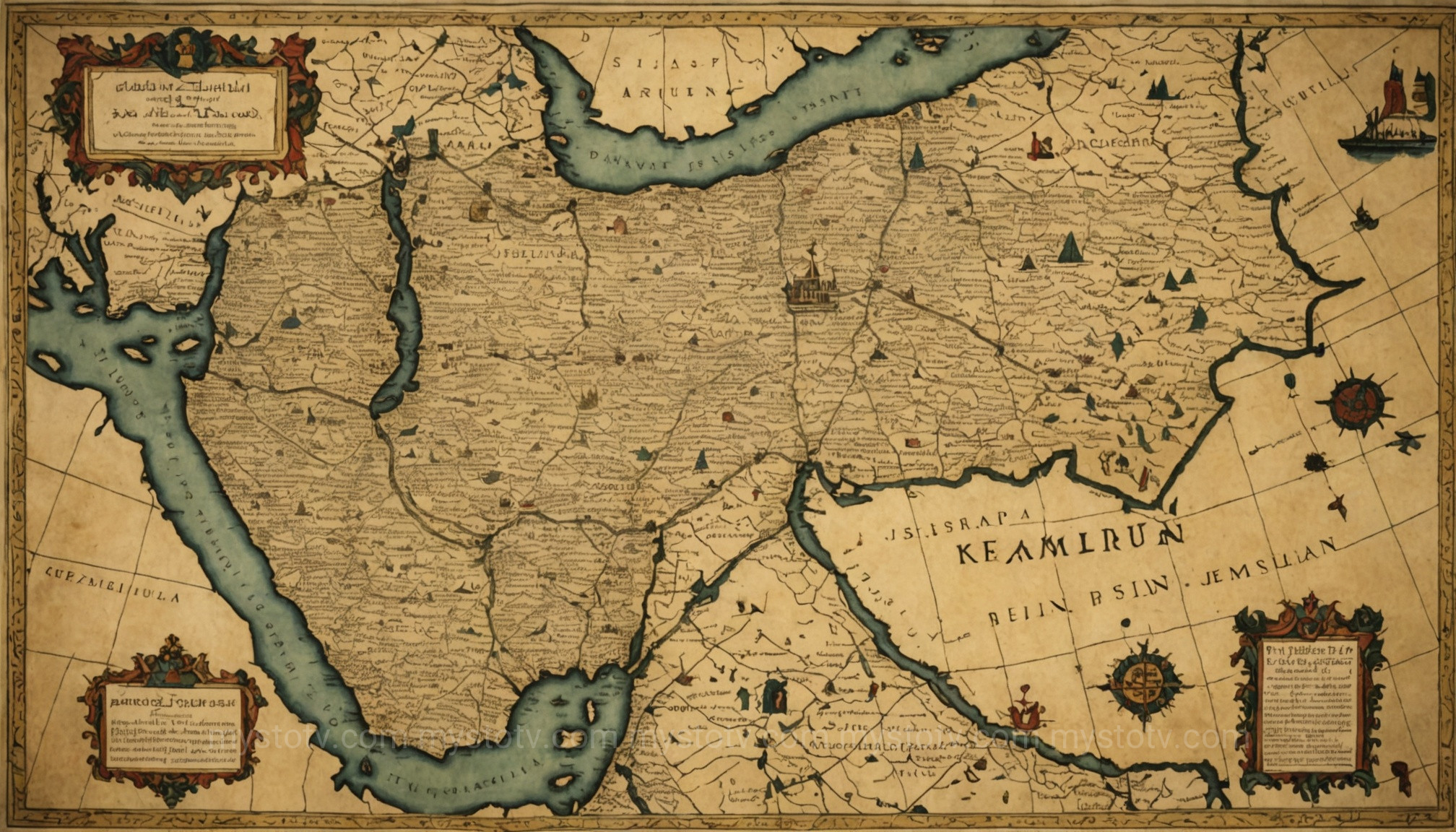
To truly appreciate the meteoric rise of Salah al-Din Yusuf ibn Ayyub, known to the West as Saladin, we must first understand the world he was born into. The 12th-century Middle East was not a monolithic Islamic empire standing against a unified Christendom. It was a complex, fractured chessboard of competing powers, a situation that the First Crusade had exploited decades earlier. Analyzing this backdrop is essential to understanding the full scope of the Saladin Crusades history and the magnitude of his achievements.
The Crusader States: A Foreign Presence in the Levant
By the time of Saladin’s birth in 1137, the Crusader States—the Kingdom of Jerusalem, the Principality of Antioch, the County of Tripoli, and the (soon-to-be-lost) County of Edessa—were well-entrenched. Established by the knights of the First Crusade, these Latin Christian kingdoms, collectively known as Outremer ("overseas"), had survived for nearly four decades. They were military and political outposts of Europe, characterized by imposing castles like the Krak des Chevaliers and a feudal society transplanted onto Middle Eastern soil. However, their existence was precarious. They were surrounded by Muslim emirates and depended heavily on a steady flow of manpower and resources from Europe. Their strategy often involved exploiting the divisions among their Muslim neighbors, making treaties with one emir to fight another.
The Muslim World's Disunity: A Power Vacuum
The primary reason the Crusader States had survived and even thrived was the profound disunity within the Muslim world. The once-mighty Abbasid Caliphate in Baghdad was a shadow of its former self, holding spiritual authority but little real political power. The real power lay with various Turkish and Arab dynasties. In Syria and Mesopotamia, the Zengids, a Turkic dynasty, were on the rise but still had to contend with rival emirs in cities like Damascus and Aleppo. Further south, Egypt was ruled by the Fatimid Caliphate, a Shia dynasty viewed as heretical by the Sunni Muslims who dominated Syria and Iraq. This deep-seated political and sectarian division meant that a coordinated response against the Crusaders was nearly impossible. It was into this fractured landscape that Saladin would emerge, making his first task not fighting the Crusaders, but uniting the Muslims.
Saladin's Early Life and Ascent: Forging a Leader in the Fires of Zengid Ambition
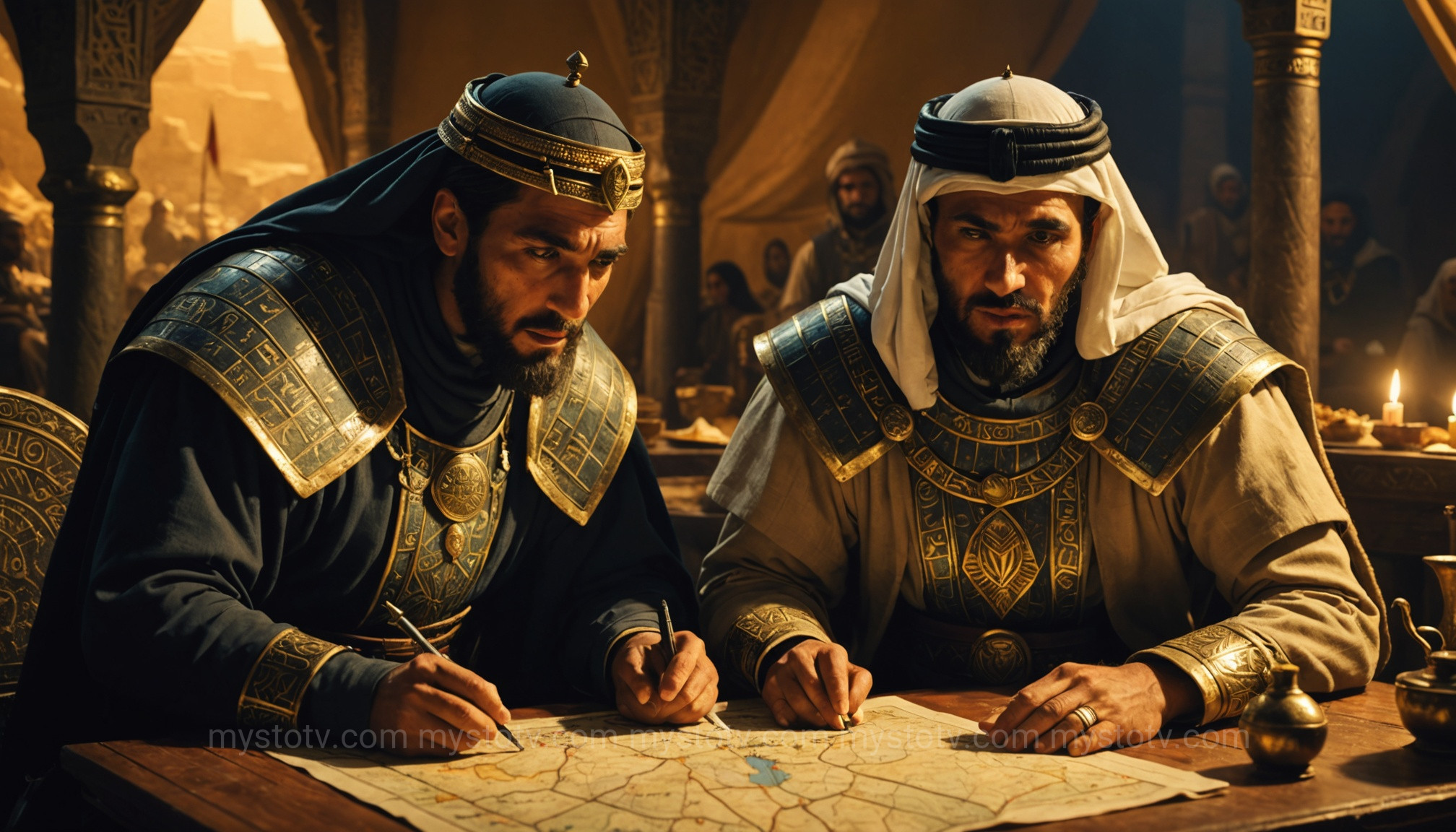
The journey from a young Kurdish boy in Tikrit to the Sultan of Egypt and Syria is the foundational narrative of the Saladin Crusades history. His rise was not accidental; it was forged through family connections, political mentorship, and a series of high-stakes military and political tests that revealed his innate genius for leadership.
From Tikrit to Damascus: The Influence of Nur al-Din Zangi
Saladin's father, Najm al-Din Ayyub, and his uncle, Asad al-Din Shirkuh, were skilled Kurdish soldiers and administrators in the service of Imad al-Din Zangi, the powerful ruler of Mosul and Aleppo. After Zangi's death, his son, Nur al-Din, inherited his domains and his mission: to unite the Muslim Near East under Sunni orthodoxy and drive out the Crusaders. Saladin grew up in Nur al-Din's court in Damascus, where he received a thorough education in theology, law, and, most importantly, military strategy. Nur al-Din was a pivotal figure in Saladin's life, serving as both a master and a role model. He was pious, just, and relentlessly focused on the goal of jihad against the Franks. This environment instilled in Saladin the core principles that would guide his entire career.
The Egyptian Campaign: A Test of Skill and Loyalty
Saladin’s big break came in the 1160s. The crumbling Fatimid Caliphate in Egypt had become a prize coveted by both Nur al-Din and the Crusader King of Jerusalem, Amalric I. A series of campaigns ensued, with Nur al-Din dispatching an army under the command of Saladin’s uncle, Shirkuh. Saladin, despite his initial reluctance, went as Shirkuh's second-in-command. These Egyptian expeditions were Saladin's crucible. He learned to command troops in difficult circumstances, engage in complex diplomacy, and endure grueling sieges. In 1169, after a series of improbable victories and political maneuvers, Shirkuh became the vizier of Egypt but died just two months later. In a move that surprised many, the 31-year-old Saladin was appointed to succeed him. He was now the master of one of the richest lands in the Muslim world, though still technically a vassal of Nur al-Din.
The Unification of Muslim Lands: A Crucial Chapter in Saladin Crusades History
With Egypt's wealth and resources under his control, Saladin began the most critical phase of his rise to power: unifying the Muslim territories of Egypt and Syria. This was not merely a conquest; it was a patient, strategic, and often diplomatic campaign that set the stage for his eventual confrontation with the Crusader kingdoms. This unification is the political centerpiece of the Saladin Crusades history.
Consolidating Power in Egypt: End of the Fatimids
Saladin’s first challenge was to secure his base in Egypt. He faced internal threats from Fatimid loyalists and external threats from a joint Crusader-Byzantine invasion, which he successfully repelled. He methodically replaced the Fatimid establishment with his own Ayyubid family members and loyal Sunni officials. The final step came in 1171, when, on Nur al-Din's orders, Saladin had the name of the Abbasid Caliph in Baghdad read in the Friday prayers, formally ending two centuries of Shia Fatimid rule in Egypt. This act not only made him a hero to Sunni Muslims but also gave him immense legitimacy. When Nur al-Din died in 1174, Saladin was no longer a subordinate but the independent ruler of a powerful and stable Egyptian state.
The Patient Conquest of Syria: From Vassal to Sultan
Nur al-Din's death created a power vacuum in Syria, with his young son as-Salih Ismail al-Malik as his nominal heir. Various emirs and relatives began vying for control. Saladin, presenting himself as the loyal protector of Nur al-Din's legacy and heir to his mission, marched from Egypt into Syria. Over the next decade, from 1174 to 1186, he used a masterful combination of military force, diplomacy, and propaganda to bring Damascus, Aleppo, Mosul, and other key cities under his rule. He often avoided protracted sieges by negotiating deals with rival rulers, portraying himself as the only leader capable of uniting Islam against the Crusaders. By 1186, he had successfully forged an empire that encircled the Crusader States from the south and the east. The stage was finally set for the holy war he had long proclaimed as his ultimate goal.
The Battle of Hattin and the Recapture of Jerusalem: The Zenith of Saladin Crusades History
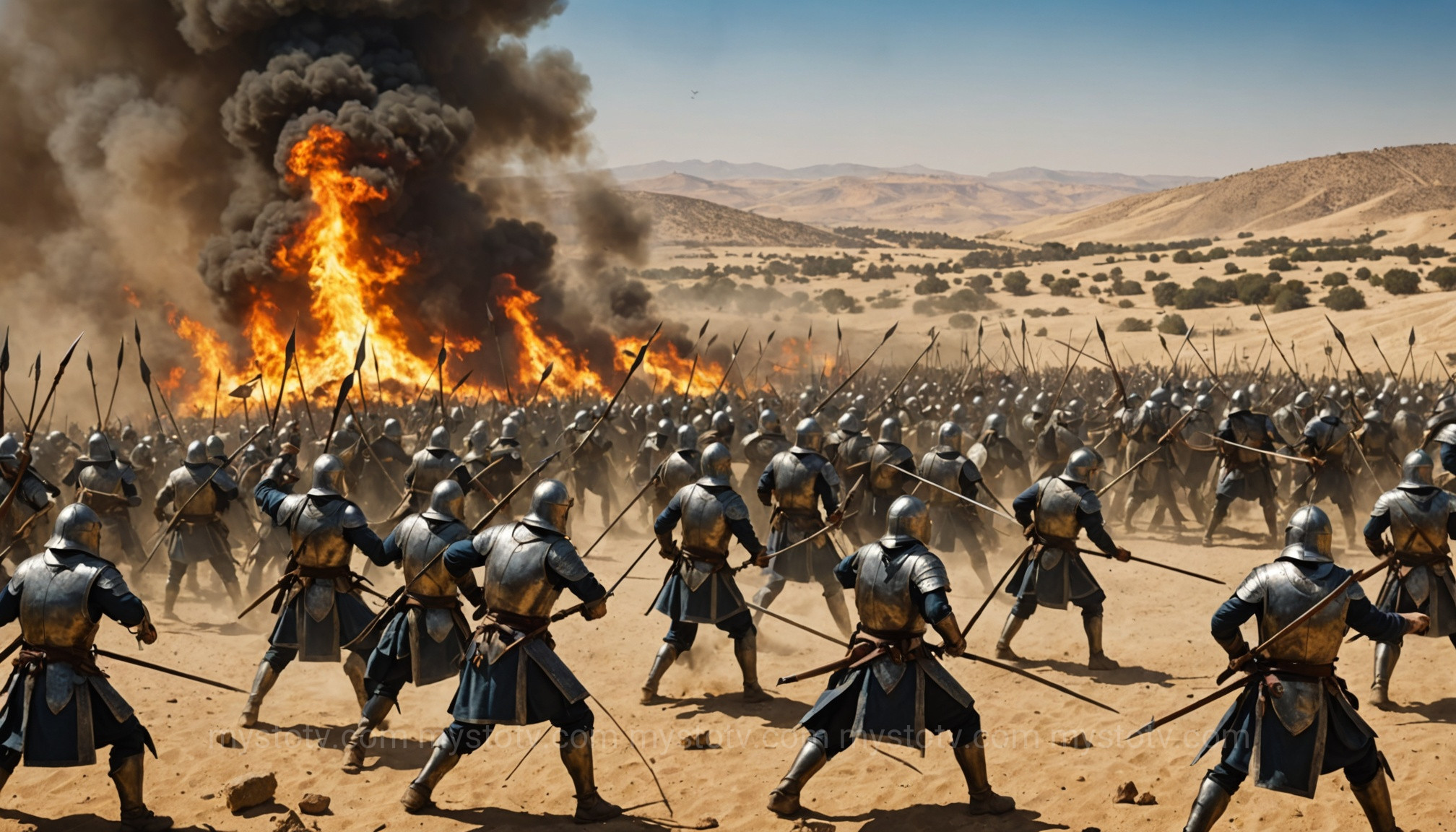
The year 1187 marks the absolute pinnacle of Saladin's career and the most dramatic turning point in the entire history of the Crusades. His unification of Muslim forces was put to the ultimate test, resulting in a victory so total it shattered the foundations of the Crusader presence in the Levant. The events of this year are the most famous chapter in the Saladin Crusades history.
The Strategic Genius at Hattin
In the summer of 1187, Saladin baited the Crusader army into a fatal trap. By besieging the city of Tiberias, he forced the main Crusader force, led by King Guy of Lusignan, to march across a parched, waterless plain to relieve the city. Throughout their march, Saladin's light cavalry harassed them, denying them access to water sources. On July 4, 1187, the exhausted, dehydrated, and demoralized Crusader army was cornered near a double-hilled landform known as the Horns of Hattin. Saladin's forces surrounded them, set fire to the dry brush to choke them with smoke, and then annihilated them. It was a military catastrophe for the Crusaders. The vast majority of their knights were killed or captured, including King Guy himself. The sacred relic of the True Cross was also seized. The military power of the Kingdom of Jerusalem was destroyed in a single day.
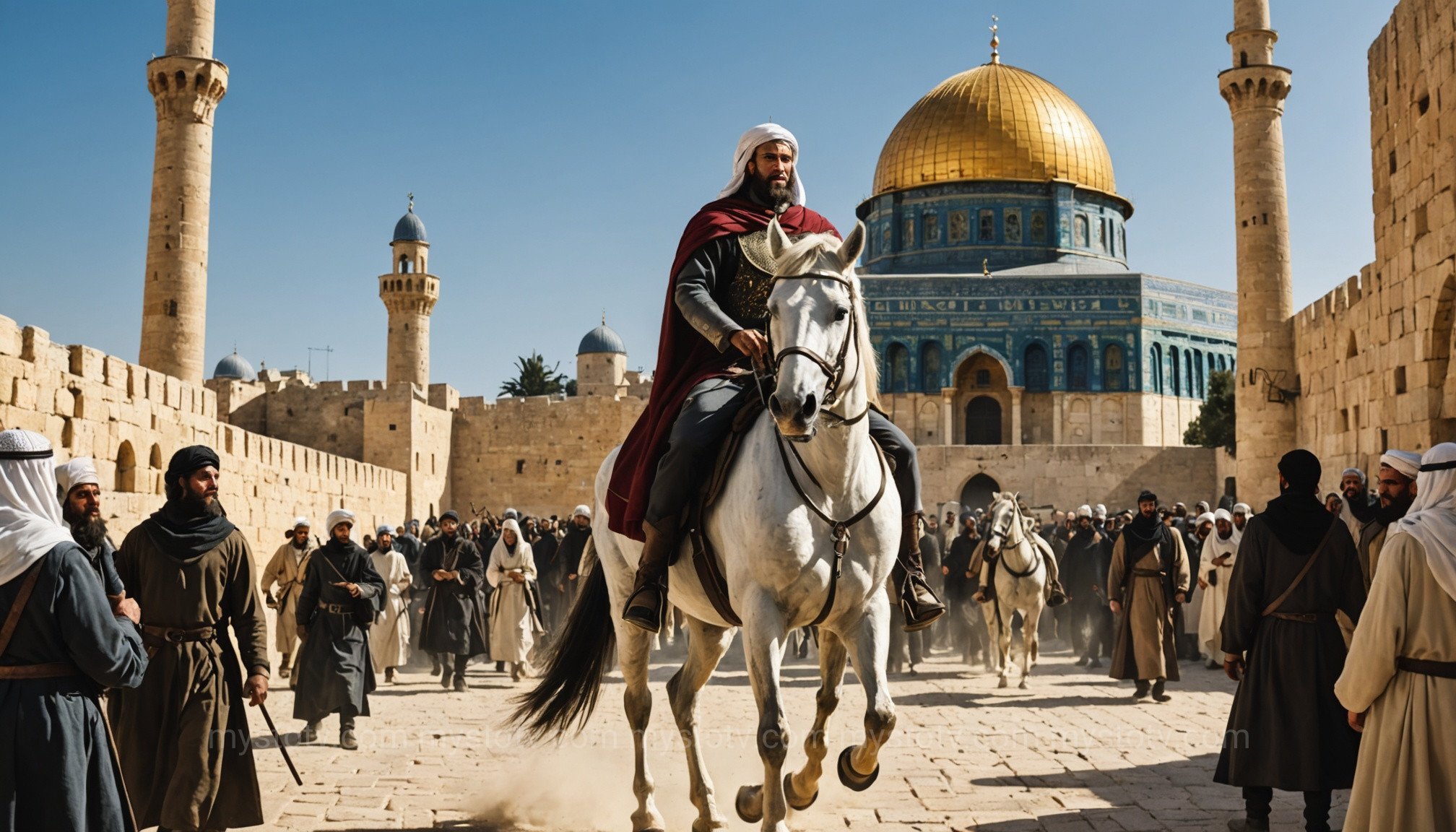
The Merciful Conqueror: The Siege of Jerusalem (1187)
With the Crusader field army gone, their cities and castles were left defenseless. One by one, they fell to Saladin’s forces. By autumn, only the great prize, Jerusalem itself, remained. The city, defended by Balian of Ibelin, prepared for a desperate siege. After a brief but intense assault, Balian negotiated a surrender. What happened next cemented Saladin’s reputation for centuries. Instead of a repeat of the brutal massacre that had accompanied the First Crusade’s capture of the city in 1099, Saladin offered remarkably merciful terms. The inhabitants could ransom themselves for a low price; those who couldn't were to be enslaved, but Saladin and his brother later paid for the freedom of thousands. He protected the city's Christian holy sites and allowed orderly processions of refugees to leave for the coast. This act of chivalry stood in stark contrast to the earlier Crusader bloodshed and was noted with admiration even by Christian chroniclers. On October 2, 1187, Saladin entered Jerusalem, restoring it to Muslim rule after 88 years.
The Third Crusade and the Clash of Titans: A Deeper Look into Saladin Crusades History
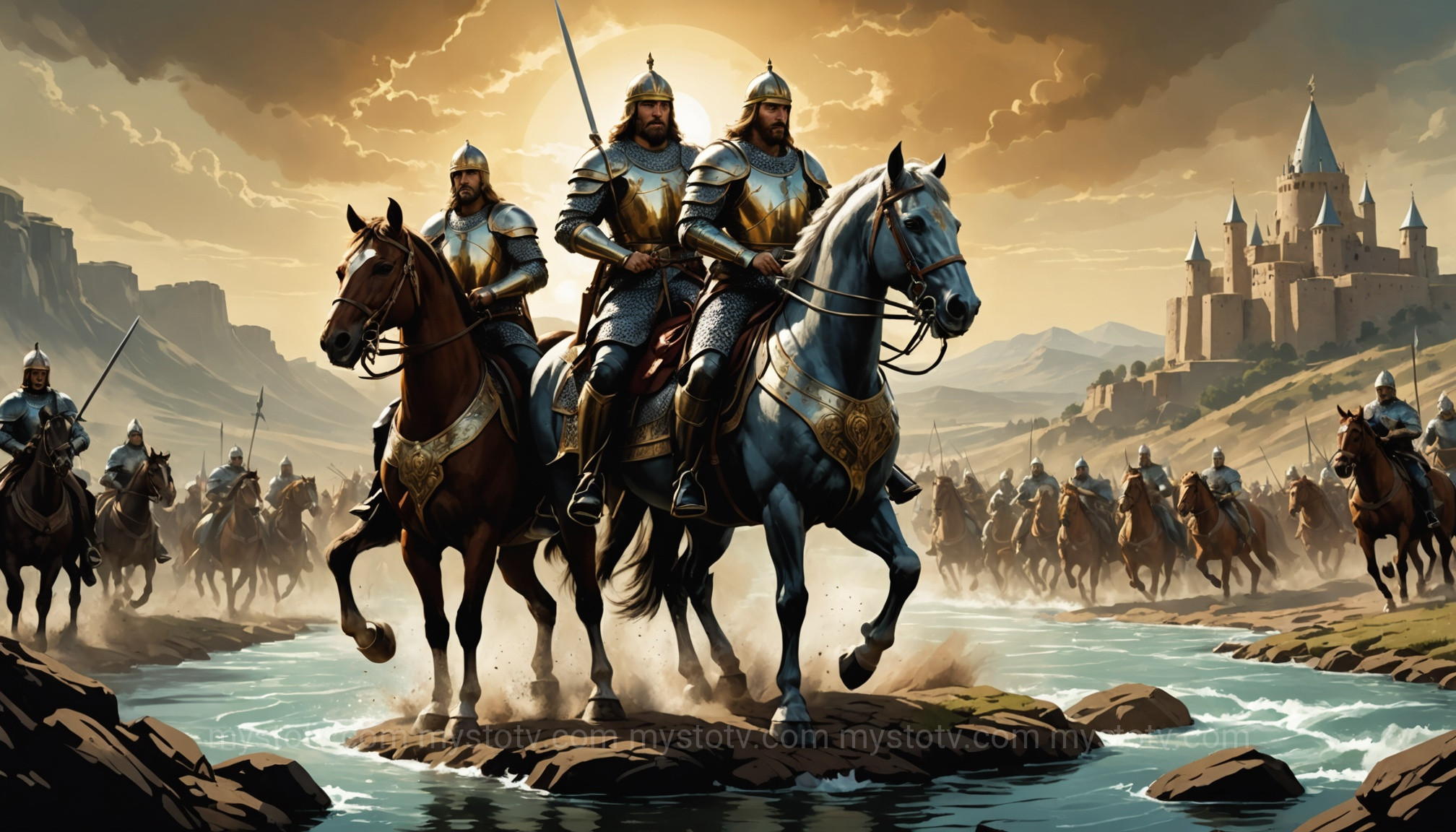
The fall of Jerusalem sent shockwaves through Europe, directly leading to the launch of the Third Crusade (1189-1192). This new conflict brought Saladin face-to-face with Europe's most formidable monarchs, most notably King Richard I of England, "the Lionheart." The resulting clash became a legendary contest of wills that further defined the Saladin Crusades history.
Richard the Lionheart's Arrival: A Worthy Adversary
Richard the Lionheart was a brilliant military tactician and a fearsome warrior, in many ways Saladin’s equal on the battlefield. When he arrived in the Holy Land in 1191, the Crusaders were bogged down in a grueling two-year siege of the port city of Acre. Richard’s leadership, energy, and siege engineering expertise quickly broke the stalemate, and the city fell to the Crusaders. The relationship between Saladin and Richard was one of intense martial rivalry mixed with a surprising degree of mutual respect and chivalry. Anecdotes, perhaps embellished over time, tell of them exchanging gifts and courteous messages. When Richard fell ill with a fever, Saladin reportedly sent him fresh fruit and snow from the mountains to cool him down. This "chivalrous" dynamic, whether entirely factual or not, highlights the personal nature of leadership in this era and has become one of the most celebrated aspects of their confrontation.
The Siege of Acre and the Treaty of Ramla: A Hard-Fought Stalemate
Despite Richard's victories, including a significant one at the Battle of Arsuf, he could never land a decisive blow against Saladin. He marched his army to within sight of Jerusalem twice but ultimately concluded that even if he could capture the city, he could not hold it once he returned to Europe. Saladin’s strategy was to harry Richard’s supply lines and avoid another pitched battle like Hattin, wearing down the Crusader army. The war ground to a stalemate. Both leaders were exhausted, and their resources were depleted. In 1192, they negotiated the Treaty of Ramla. The treaty confirmed Muslim control over Jerusalem but allowed unarmed Christian pilgrims safe passage to visit the holy sites. The Crusaders would retain control of a thin strip of coastline from Tyre to Jaffa. It was a compromise, but one that left Saladin in possession of his greatest prize. The Battle of Hattin and the Recapture of Jerusalem had permanently altered the balance of power, a reality the treaty affirmed.
The Legacy of Saladin: Beyond the Crusades History
Saladin died of a fever in Damascus in 1193, not long after Richard the Lionheart departed for Europe. He left behind a legacy that far transcended the battlefield, securing his place not just in Islamic history but in world history. Examining his legacy is the final, crucial component of understanding the full impact of the Saladin Crusades history.
A Symbol of Chivalry and Leadership
Upon his death, it was discovered that Saladin's personal wealth was so meager that there wasn't even enough money to pay for his burial. He had given away his immense riches to his subjects. This act epitomized his reputation for piety, generosity, and justice. In the Muslim world, he is revered as the unifier of Islam and the liberator of Jerusalem. But his reputation also grew in the West. European chroniclers, and later Enlightenment thinkers like Voltaire and novelists like Sir Walter Scott, portrayed him as the "noble Saracen." He became the archetype of the chivalrous and magnanimous enemy, a leader whose virtue was worthy of emulation. This dual legacy—as a pious Muslim hero and a universally respected figure of chivalry—is unique among the figures of the Crusades.
The Ayyubid Dynasty and its Aftermath
Politically, Saladin founded the Ayyubid dynasty, which would rule over Egypt, Syria, and Yemen for several decades after his death. His empire, however, was a personal creation and quickly fragmented among his sons and brothers, proving that his unifying leadership was difficult to replicate. The Ayyubids continued to fight the Crusaders, most notably during the Fifth and Sixth Crusades, but never with the same unified purpose Saladin had commanded. Ultimately, the Ayyubid Sultanate in Egypt was overthrown in 1250 by its own Mamluk slave soldiers, who would go on to finally expel the Crusaders from the Levant for good. While his dynasty was relatively short-lived, the geopolitical reality he created—a strong, unified Egyptian-Syrian state—dominated the region for centuries and permanently ended the viability of the Crusader States.
The Saladin Crusades history is more than a chronicle of wars; it is the story of how one man’s vision, piety, and strategic brilliance reshaped an era. From unifying a fractured Muslim world to his legendary encounters with Richard the Lionheart, Saladin's life demonstrates the profound impact of leadership on the course of history. He not only reclaimed Jerusalem but also established a code of conduct that earned the respect of his foes, leaving behind a complex and enduring legacy as a warrior, a statesman, and a symbol of chivalry that continues to fascinate and inspire people around the world today.
Frequently Asked Questions about Saladin Crusades History
Here are answers to some common questions that provide additional clarity on the life and times of Saladin.
1. Was Saladin an Arab, a Turk, or something else?
Saladin was of Kurdish ethnicity. His family, the Ayyubids, were a Kurdish clan that originated from the area around Dvin in medieval Armenia. They rose to prominence as soldiers and administrators in the service of the Turkic Zengid dynasty. While Saladin led a largely Arab and Turkic army and became a hero for the entire Muslim world, his ethnic roots were Kurdish, a fact that highlights the diverse, multi-ethnic nature of the medieval Middle East.
2. How did Saladin really treat the Christians of Jerusalem?
His treatment of the Christians after the capture of Jerusalem in 1187 is a key part of his legacy. In stark contrast to the 1099 Crusader massacre, Saladin negotiated a peaceful surrender. He allowed the Eastern Orthodox Christians to remain and guaranteed the safety of Christian holy sites, including the Church of the Holy Sepulchre. Latin (Catholic) Christians were required to ransom themselves to leave the city. While this involved paying a fee and some who couldn't pay were enslaved, Saladin himself, along with his brother and other commanders, used their own money to ransom thousands of the poor, allowing them safe passage to Crusader-held territory. His actions were widely seen as merciful and just, especially by the standards of the time.
3. What was the relationship between Saladin and Richard the Lionheart really like?
Their relationship was complex, a mix of fierce martial opposition and mutual, chivalric respect. They never met in person. However, they communicated through envoys and developed a clear understanding of each other's capabilities. Richard was the only Crusader leader who could consistently defeat Saladin in open battle, while Saladin was a master of strategy who prevented Richard from achieving his ultimate goal of retaking Jerusalem. The famous tales of them exchanging gifts—Saladin sending doctors and fruit when Richard was sick, Richard offering his own horse if Saladin's was killed in battle—are likely romanticized but reflect a real sense of respect between two preeminent warriors of their age.
References
- Asbridge, Thomas. The Crusades: The Authoritative History of the War for the Holy Land. Ecco, 2011.
- Ehrenkreutz, Andrew S. Saladin. State University of New York Press, 1972.
- Hindley, Geoffrey. Saladin: Hero of Islam. Pen & Sword Military, 2007.
- Lyons, Malcolm Cameron, and D.E.P. Jackson. Saladin: The Politics of the Holy War. Cambridge University Press, 1982.
- Maalouf, Amin. The Crusades Through Arab Eyes. Schocken, 1989.